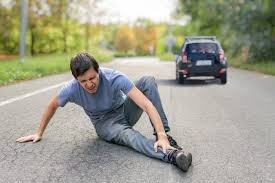When the Other Driver Flees: Hit-and-Run Crashes in Maui and What You Can Do

A peaceful drive along Maui’s stunning coastal highways can turn into a nightmare in an instant. One moment, you’re admiring the ocean view—the next, you’re jolted by the impact of another vehicle. But the shock intensifies when the other driver speeds away instead of stopping to help. Hit-and-run accidents are among the most distressing types of crashes, leaving victims injured, frightened, and unsure what to do next.
For those affected, the confusion goes beyond the physical pain. How do you hold someone accountable if you don’t know who they are? What happens with insurance coverage when the at-fault driver disappears? Fortunately, victims still have options. With help from skilled Singleton Schreiber Injury Attorneys, you can take decisive steps toward justice, even when the responsible party tries to escape it.
The Rising Problem of Hit-and-Run Accidents in Hawaii
Hit-and-run crashes are unfortunately becoming more common across the islands, including Maui. Limited road lighting, narrow highways, and busy tourist areas create conditions ripe for accidents. Drivers who panic—especially if they’re uninsured, intoxicated, or driving illegally—may flee the scene to avoid arrest.
According to data from the Hawaii Department of Transportation, hit-and-run incidents have increased in recent years, with many occurring on secondary roads and in pedestrian-heavy zones. Maui’s mix of locals, tourists, and rental vehicles adds complexity to investigations, as identifying a fleeing driver can take time and coordination between law enforcement and insurance companies.
Why Drivers Flee the Scene
Leaving the scene of an accident is a serious criminal offense in Hawaii. Yet, drivers flee for several reasons:
- Fear of legal consequences, especially for DUI or reckless driving
- Lack of insurance coverage or an expired license
- Panic or confusion after the crash
- Outstanding warrants or prior offenses
- Misjudgment—believing the damage was minor or unnoticed
Regardless of the reason, fleeing the scene turns a traffic violation into a potential felony and often leaves victims in dangerous situations, without immediate medical help or information for insurance claims.
What to Do Immediately After a Hit-and-Run Crash
If you’re involved in a hit-and-run accident in Maui, your actions in the first few moments can make a big difference in your recovery and your case. Here’s what you should do:
- Stay calm and ensure safety. Pull over to a safe spot and check for injuries. Call 911 right away, even if the other driver is gone.
- Gather as much information as possible. Try to note details about the fleeing vehicle—make, model, color, license plate (even partial numbers), and direction of travel.
- Document the scene. Take photos of your car, debris, tire marks, and the surrounding area.
- Find witnesses. Ask bystanders or nearby drivers if they saw anything. Their statements can be vital to the police investigation.
- Report the crash to the police. Maui police take hit-and-run incidents seriously, and filing an official report is essential for insurance and legal purposes.
- Seek medical attention. Even if you feel fine, some injuries don’t appear immediately. Medical records also strengthen your claim.
- Notify your insurance company. Inform them that the crash was a hit-and-run, but avoid providing recorded statements until you’ve spoken with an attorney.
Quick documentation and reporting can help police identify the fleeing driver—and protect your right to compensation even if they’re never found.
Understanding Hawaii’s Hit-and-Run Laws
Under Hawaii Revised Statutes § 291C-13, drivers involved in an accident that causes injury, death, or property damage must stop immediately at or near the scene. Failing to do so is considered a criminal offense, and penalties depend on the severity of the crash:
- Property damage only: Up to 30 days in jail and fines up to $1,000.
- Injury accidents: Class C felony, up to 5 years in prison and higher fines.
- Fatal crashes: Class B felony, with penalties up to 10 years in prison.
These strict laws reflect how seriously Hawaii views hit-and-run incidents. However, criminal prosecution doesn’t automatically result in financial compensation for victims—that requires a civil claim or insurance recovery process.
Insurance Coverage Options for Hit-and-Run Victims
One of the biggest challenges in hit-and-run cases is getting compensation when the other driver isn’t identified. Thankfully, Hawaii’s insurance system provides several options:
- Personal Injury Protection (PIP): Covers your medical expenses up to policy limits, regardless of fault.
- Uninsured Motorist (UM) Coverage: If you carry UM coverage, it acts as a safety net when the at-fault driver is unknown or uninsured.
- Collision Coverage: Pays for vehicle repairs after the accident, subject to your deductible.
Tourists driving rental cars may have additional protection through their rental agreement, personal auto insurance, or credit card benefits. Reviewing these details carefully with an attorney helps ensure all possible coverage is used.
How Attorneys Investigate Hit-and-Run Cases
Even when it seems impossible to find a fleeing driver, attorneys and investigators have several tools at their disposal. A strong legal team can:
- Work with police to review traffic and security camera footage
- Analyze paint transfers, debris, and skid marks from the crash site
- Interview witnesses and nearby residents
- Subpoena cell phone or vehicle GPS data if a suspect vehicle is identified
- Coordinate with insurance adjusters and accident reconstruction experts
These efforts can lead to the identification of the driver—or at minimum, ensure victims access every available source of compensation through their insurance coverage.
Common Injuries from Hit-and-Run Accidents
Because hit-and-run victims often don’t receive immediate help, injuries can be especially severe. Some of the most common include:
- Traumatic brain injuries (TBI)
- Spinal cord damage
- Internal bleeding
- Broken bones and fractures
- Whiplash or back injuries
- Lacerations and burns
Prompt medical care not only saves lives but also provides essential evidence linking your injuries to the crash.
Legal Options for Victims and Families
If the driver is identified, victims can file a personal injury lawsuit to recover damages such as:
- Medical expenses and rehabilitation
- Lost wages and future earning capacity
- Property damage
- Pain and suffering
- Emotional distress
- Punitive damages (in extreme cases of recklessness or DUI)
If the driver remains unidentified, victims can still recover compensation through uninsured motorist coverage or other applicable policies. In fatal hit-and-run cases, surviving family members may pursue a wrongful death claim to hold the offender—or their insurer—financially responsible.
Preventing Hit-and-Run Crashes in Maui
Not every hit-and-run can be prevented, but you can lower the risk by being aware and driving safely. Drive defensively and steer clear of aggressive drivers. Pay attention in parking lots and at intersections, where many hit-and-runs happen. Installing a dashcam can provide clear video evidence if an incident occurs. Always wear your seatbelt to reduce injuries in case of a collision.
For pedestrians and cyclists, wearing reflective clothing and using lights is very important, especially during dawn or dusk when visibility decreases. Staying visible and alert helps make the roads safer and reduces the chances of hit-and-run accidents.




